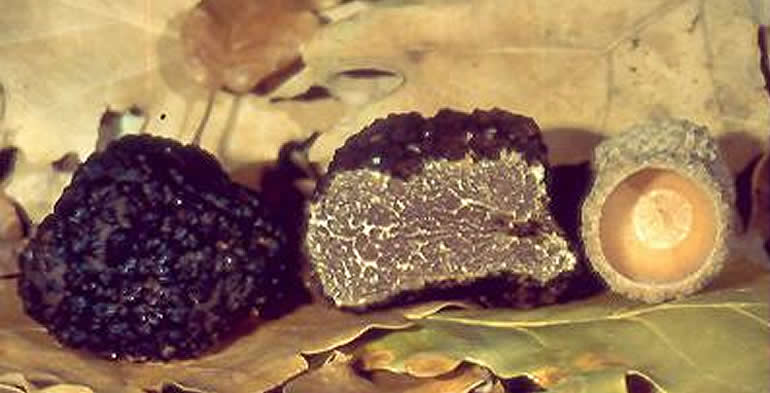-
Burgundy Truffle (Tuber Uncinatum Chatin)

Organoleptic features: to all effects the Burgundy truffle is the noble version of the summer truffle. As it fructifies in the autumn-winter period, and prefers higher altitudes with cooler environments, it has less of a rind, with not as much unevenness and smaller warts compared to the summer truffle. It can achieve a reasonable size, the flesh is dark colored and emanates a more intense and persistent perfume than the summer truffle. It is a very pleasant truffle to the nose and taste. The quality-price ratio for this truffle is decidedly good also due to its versatility of use, constituting as it does a valid alternative to the valuable white truffle in periods when the harvest of the latter is low and market prices are on the rise.
Symbiotic arboreal species: this fungus establishes a symbiosis with the Turkey oak, Hop Hornbeam, Common Hornbeam and Hazel in the areas of the Mugello and the Apennines.
Adjuvant shrubs: in the production areas of the Mugello and the Apennines, hellebores and primroses can often be found amongst the flora accompanying Burgundy truffle-fields.
